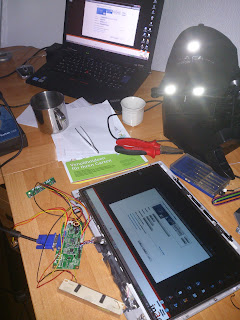- the binary indicator information of EECH (various indicator lights) seem not to be exported. It seems to be a bug of a previous release that was either not fixed or reoccured. Anyway, there is no way at the moment to export the indicator light status and therefore there is no chance to map them to any Helios indicator light. The good news however is, the bridge from EECH-to-Helios over EOS works in principle, although it's not relevant with the current bug.
- There is no chance of mapping the telemetry information (altitude, speed, etc) to any of the analog inputs. The reason is, the analog EOS inputs have a discrete value range of 0 to 1024. For certain gauges (i.e. Altimeter), Helios only accepts continuous float values. The CommServer of EECH however does export float values. So there is simply one conclusion: EOS is not the right protocol to transport the telemetry data.
First, I have to address the indicator export issues to the EECH developers community, so that those information will be exported again via CommServer.
Second, I have to find a different way of transporting the (float) telemetry data to Helios, and I already have an idea for that: Helios was initially created to receive the telemetry data from the LUA export of DCS. The format exported is a bit different to that of EECH (not much) and customizable (great!). Further, Helios provides a LUA export script for DCS out of the box, so I could use that. The major difference between DCS Lua Export and EECH CommServer is, that DCS pushes the data while EECH responds to requests. As Helios was intentionally designed to communicate with DCS, it expects the data to be pushed to it. And here comes in the siconbus. The idea is, to connect a "Pull"-Connector, that polls EECH for telemetry data with a "PUSH"-Connector that pushes the data to Helios. The polling interval is controlled by the Pull-Connector and the data is transformed on the bus.
Now I just need to find the time to implement this idea...
